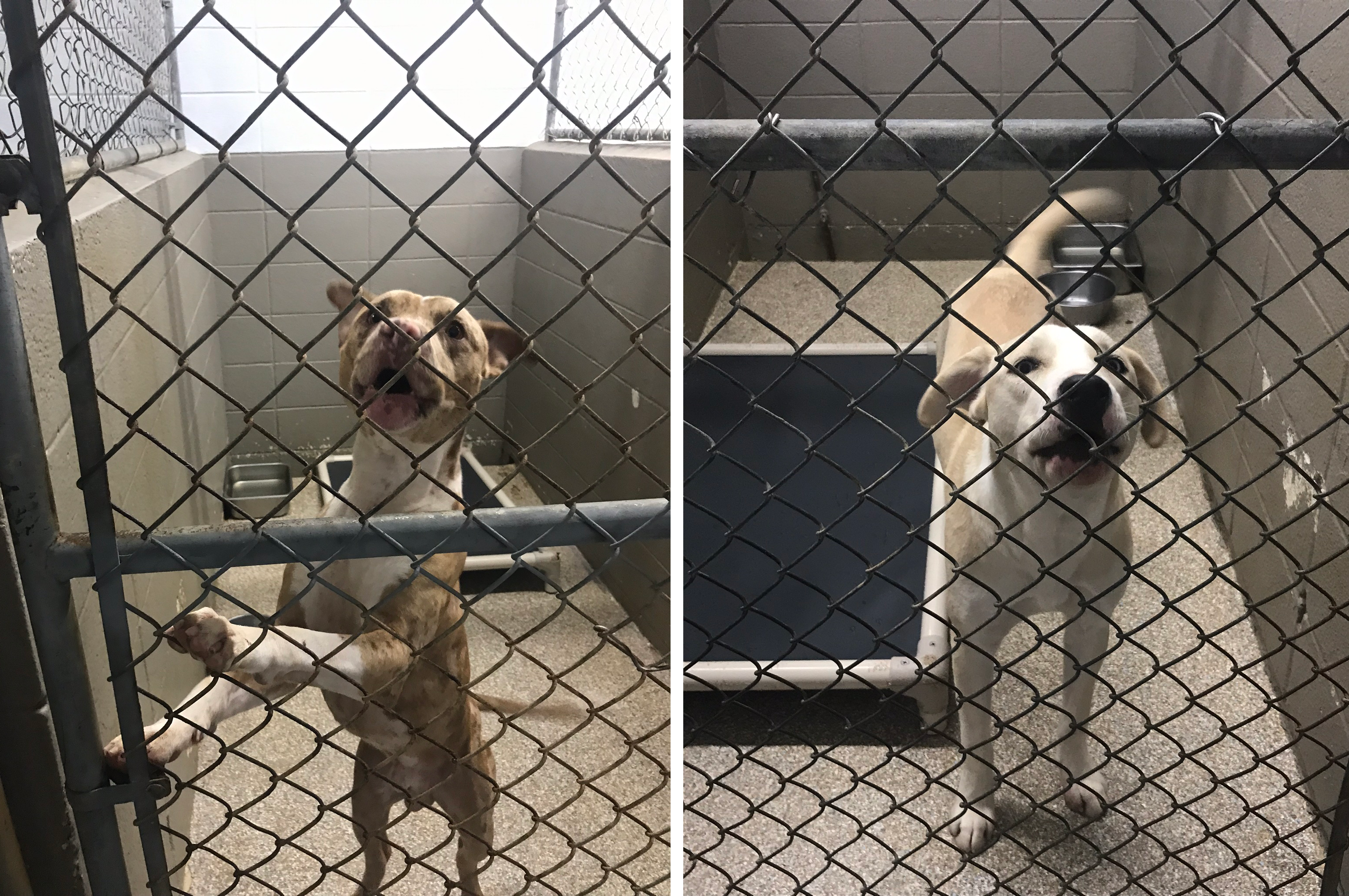Module 8: The Case of the Barking Dog
Shelter Animals and Behavior Problems
Both stress and behavioral problems are common in animals housed in shelters. Behavioral problems may be the reason that the animal was relinquished in the first place, or may develop as a result of shelter life. Behavioral problems commonly develop in animals that are housed for a prolonged period of time in poorly enriched environments, but the stress of even short-term confinement in a shelter can significantly compromise both physical and behavioral health, negatively impacting animal behavior and welfare.

Shelters must develop programs designed to minimize stress and prevent the development of behavioral problems, as well as to detect as many problems as possible. The importance of detecting problems should never be discounted as even the best equipped shelter will not be able to manage or modify behavior, or match pets to appropriate homes, if they are unaware that any problems exist.
Common Behavioral Problems that Lead to Relinquishment of Pets
For dogs, commonly reported behavioral reasons for relinquishment include: aggression, housetraining issues, jumping, barking, destructive behavior, hyperactivity/unruly behavior, and incompatibility with other pets. For cats, commonly reported behavioral reasons for relinquishment include: litter box issues, spraying, destructive behavior, scratching, nocturnal activity, hyperactivity, and unfriendliness. Many of these are typical or even normal behavior that could be easily prevented, managed, and/or modified in the home.
Shelter dogs and cats are often “diamonds in the rough” that would make wonderful pets with good adoption counseling, the right home, and a little training and proactive behavioral care. In some instances providing support for owners who are struggling with their pets’ behavior before they reach the “end of their rope” and decide to relinquish will keep pets with their owners and out of the shelter! By making behavioral health care a priority in practice, veterinary practitioners can play a life-saving role by helping clients to resolve these and other common problems and prevent relinquishment. Shelters can also serve as community resources to help prevent relinquishment, and many shelters offer pet behavior support programs to help keep pets in their homes.
Shelter Life, Stress, and its Potential Impact
Shelter life is stressful! Housing cats and dogs in animal shelters presents enormous opportunities for introducing stressors and inducing stress. In fact, cats and dogs experience many stressors in animal shelters beginning at the moment of admission. Even under the best possible conditions, shelters are stressful by their very nature. Incoming animals are confined and exposed to varying intensities of new and novel stimuli. Stressors may include:
- transport
- confinement in a new environment
- social isolation
- changes in temperature, light pattern, and/or ventilation
- strange smells
- loud noises
- proximity to other animals
- diet changes
- handling and/or restraint
- irregular caregiving schedules
- unpredictable events
- illness
- the absence of familiar human contact or the presence of unfamiliar human contact
Anything unfamiliar to a cat or dog can activate the stress response. In addition, when animals are housed in shelters, stress frequently arises from the lack of opportunities they possess for engaging in activities that would help them to feel better or cope. For example, dogs may want to seek social contact with a person but be unable to do so because they are confined or because they are very scared. A cat may want to retreat to a quiet spot for a nap, but be unable to escape the sounds of barking dogs.
Keep in mind that stress responses are highly variable among individuals: what one finds distressing may not be to another. What is “stressful” is dependent on the perception of an individual animal. For many animals, stress is frequently accompanied by feelings of fear, anxiety, and/or frustration. And, stress has a profound influence on behavior. Some animals will refuse to eat. Some may refuse to move. Others will behave aggressively. In shelters, animals experiencing fear, anxiety, stress and frustration are more likely to become ill. Upper respiratory infections are especially common.
When confined in a shelter, cats and dogs may suffer from chronic anxiety, social isolation, inadequate mental stimulation, and lack of exercise, all of which adversely affect their physical and emotional health—both in the short- and long-term. These negative emotions affect the ways in which they behave and often lessen their adoptability. These changes may result in euthanasia of the animal in some shelters, or in others it will increase the length of their stay if they do not attract the interest of an adopter because of poor physical or emotional health. Over time, the animal’s emotional and/or physical well-being may be compromised even further. Chronically stressed animals are more likely to develop serious ongoing behavior problems. Fortunately, just as there are many ways for us to bolster the physical health of animals in shelters, we can also work to support their behavioral or emotional health as well.

